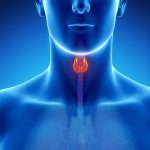
Intense weather fluctuations caused by climate change could be contributing to an increase in stroke deaths, a new study claims. Freezing cold fronts and broiling heat waves are associated with more than half a million deaths annually in recent years, researchers report April 10 in the journal Neurology. “Dramatic temperature changes in recent years have affected human health and caused widespread concern,” said researcher Quan Cheng, of Xiangya Hospital at Central South University in Changsha, China. “Our study found that these changing temperatures may increase the burden of stroke worldwide, especially in older populations and areas with more health care disparities,” Cheng added in a journal news release. Bone-chilling cold fronts in particular were linked to more strokes, researchers said. But temperatures that swing too high or too low can both increase a person’s risk of stroke, researchers added in background notes. Lower temperatures cause a person’s blood vessels to constrict, increasing blood pressure. High blood pressure is a primary risk factor for stroke. On the other hand, higher temperatures can cause dehydration, which thickens and slows blood — factors also associated with stroke. Stroke deaths in the United States increased 26% between 2011 and 2021, according to the American Heart Association. Some of this could be tied to climate change, the researchers argue. For the study, the team looked at three decades of health… read on > read on >


















